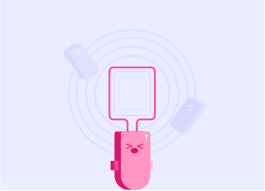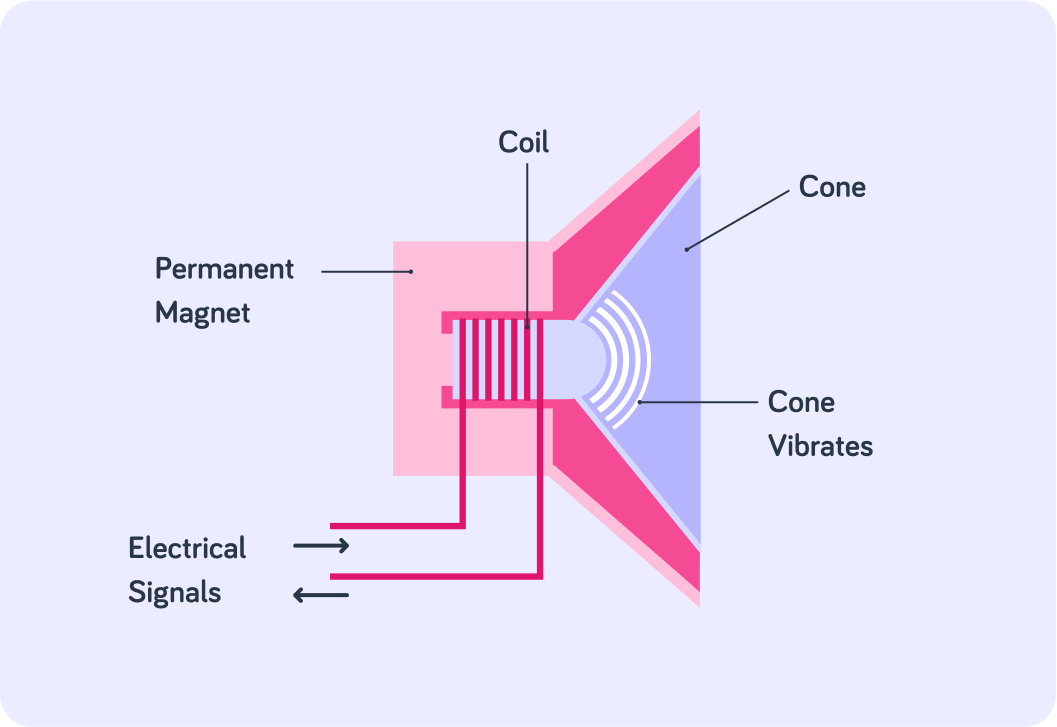YOU ARE LEARNING:
How Headphones and Loudspeakers Use This Effect

How Headphones and Loudspeakers Use This Effect
Loudspeakers and headphones use the motor effect to convert variations in current in electrical circuits to the pressure variations in sound waves.
What will a bar magnet experience when placed in a magnetic field?

An electric current flowing through a conductor generates a magnetic field. We call this force...

A current-carrying wire in a magnetic field will experience a force. What do we call this effect?

A current-carrying conductor produces a magnetic field. If we place this inside another magnetic field, the two fields interact. We call this the motor effect because we use it to generate rotation in electric motors.
Loudspeakers and headphones also make use of the motor effect. This image illustrates the inside of loudspeaker. Headphones contain a similar setup only much smaller.
There is a coil wrapped around one end of a cone. There is also a permanent magnet inside of the coil of wire.

When a current is sent through the coil of wire, it produces a magnetic field around the coil. The permanent magnet interacts with the field, causing...


The magnetic fields of the permanent magnet and the coil of wire either attract or repel each other, depending on their direction.
The force produced by this interaction causes the cone to move.

What type of current do you think is required for this set up?


When we change the direction of the current through the coil, we change the direction of the magnetic field generated by the coil. How do you think that will affect the cone in the loudspeaker or headphone?
A) It will cause the cone to vibrate. B) It will cause the cone to shrink. C) It will cause the cone to become magnetic.


So an alternating current is constantly changing direction, which causes the force due to the motor effect to also constantly change direction.
This makes the cone move in and out - it vibrates.

What do these vibrations in the cone produce?


How is sound actually produced?
Sound waves are produced from the vibrations of the cone, which are transferred to the air particles nearby.

Particular sounds have certain frequencies, so we can control the sounds produced by loudspeakers and headphones by controlling the frequency of the AC.
The frequency of AC is how many times it changes direction per second.

The current can't alternate at random frequencies because...
A) that would break the electrical circuit. B) that would make the cone vibrate randomly. C) that would break the magnetic field.


So loudspeakers and headphones convert electrical signals into sound.
The change in direction of the alternating electrical current...
causes the magnetic field to also change direction.
The change in the direction of the magnetic field...
causes the cone to vibrate.
When the cone vibrates...
it produces sound waves.
The sound waves occur...
when the vibrations disturb the particles in the air and set them in motion.
